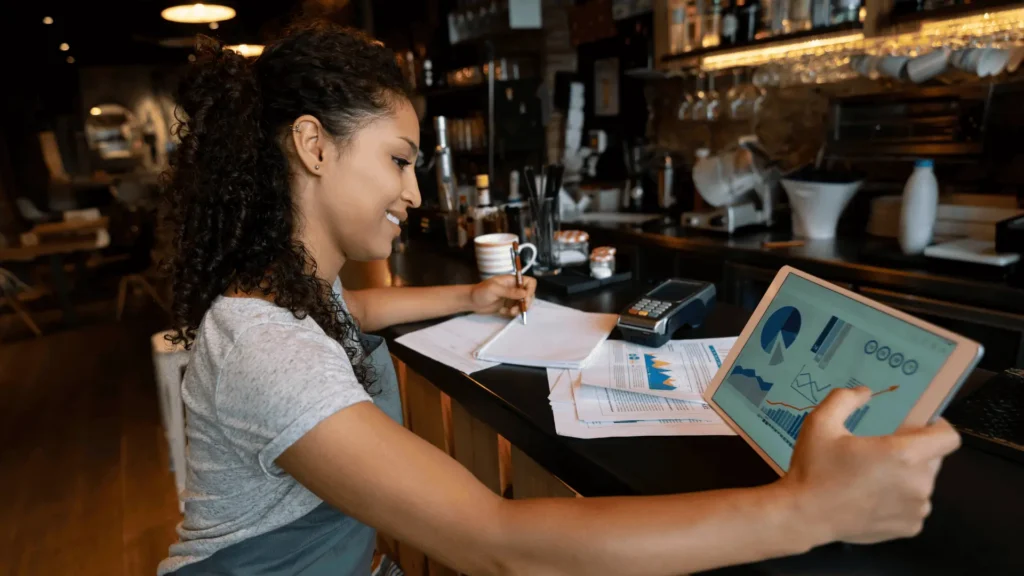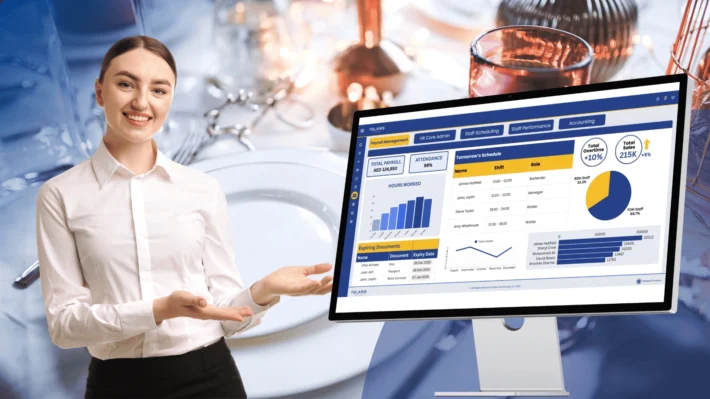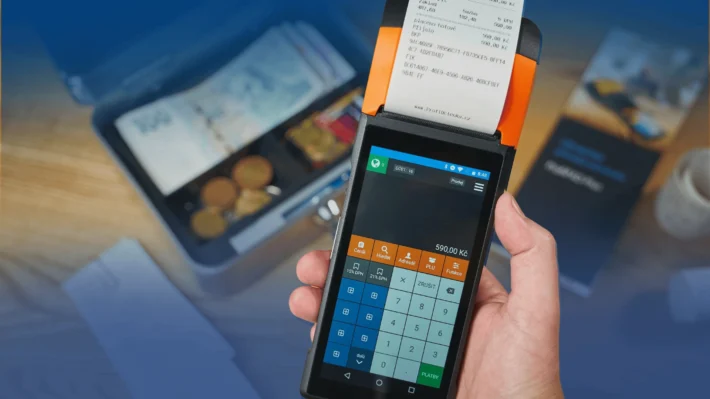How to Simplify Restaurant Operations with an ERP System

Introduction
Modern restaurant operations are faced with multiple challenges, primarily due to using multiple systems for various functions, such as sales, accounting, inventory, purchasing, payroll, or marketing. Not only the use of individual systems for all these functions means higher costs for the business, which cover different licenses and subscriptions, but this also generates complex issues that can affect the business on various levels:
- Working with multiple systems means data fragmentation across different platforms, which leads to inconsistencies and inaccuracies in accurate data processing.
- Different systems means different analysis platforms, which requires manual work to integrate data from across all systems used. This causes inefficiencies and redundancy, it’s an error-prone process, and leaves the business without real-time insights, therefore, hampering decision makers making informed decisions and missing opportunities.
The good news is that restaurant operations do not have to go through these complexities. Removing all the hassle associated with using multiple systems is possible, by doing the opposite: using only one system for all restaurant operations.
Enterprise resource planning (ERP) covers all business systems and processes into a single platform, providing real-life insights from across all data points. Furthermore, all systems are in-built, which means that they communicate naturally with each other, avoiding manual processes for data collection, or clunky integrations, and providing real-time insights that allow decision makers to seize growth or other market opportunities.
What is an ERP System for Restaurants?
An ERP system is a unified software platform that brings together all business functions, automating core processes to boost efficiency and providing real-time insights across the organization. Applied to the food and beverage (F&B) industry, an ERP system includes all operational modules, like sales, accounting, inventory, purchase, recipe management, payroll or marketing, facilitating automation organization-wide, as well as simplifying operations.
An ERP system for restaurants fits best franchises, or restaurant groups with multiple branches, which can unify insights from across multiple locations, but also to single-branch restaurants that manage a high number of operations and interact with multiple vendors and partners.
Key features to consider when selecting a restaurant ERP
How an ERP System Simplifies Key Restaurant Operations
Inventory Management:
A restaurant ERP, such as Polaris ERP, automates inventory tracking, providing real-time updates on how the raw materials or finished goods are moving through the supply chain, which helps restaurant managers managers know when to restock, or use specific items, according to the FIFO (first-in-first-out) method.
For inventory management, an advanced ERP, specifically designed for the F&B industry, like Polaris ERP also reduces inaccuracies, because it leaves no room for human errors, as well as it identifies any price fluctuations in ingredients, recommending re-negotiating with specific suppliers, or finding alternative solutions to keep the cost of goods in control.
Order Processing:
A restaurant ERP system centralizes order processing by consolidating orders from all channels—dine-in, takeout, and delivery—into a single platform. This streamlines the entire workflow, reducing errors, speeding up order fulfillment, and providing a real-time overview of all incoming orders. As a result, it ensures smoother operations and enhances customer satisfaction across all service areas.
Financial Management
The ERP system consolidates financial data from various sources into a unified platform, automating reporting and offering detailed profitability analysis. This streamlines financial operations, provides accurate insights into financial performance, and supports better budgeting and forecasting, so restaurateurs can seize growth or other market opportunities, knowing at all times how their business is doing.
Recipe Management and COGS
ERP systems manage recipes and calculate the cost of goods sold (COGS) by integrating inventory data with recipe components. This helps restaurants control food costs, ensure consistency in dish preparation, and optimize pricing strategies to improve overall profitability.
The AI-Powered Food Cost Calculator available with Polaris ERP captures data from across all your systems, providing AI-guided recommendations on how to keep profits at a level equal to, or higher than 75%, when considering the value of COGS.
Staff Management
A restaurant ERP system simplifies staff management with efficient scheduling tools, automated payroll processing, and real-time performance monitoring. This ensures optimal staffing levels, reduces administrative workload, and helps track employee productivity and compliance.
Benefits of Implementing an ERP System in Your Restaurant
Time Savings and Automation:
Replacing multiple systems with an all-in-one system that unifies all restaurant functions results in increased efficiency, which translates into time savings. A restaurant ERP automates processes by unifying various operational tasks into a single, centralized system. This includes automating order processing from multiple channels (dine-in, takeout, delivery), streamlining inventory management with real-time tracking and automated reordering, and managing staff schedules and payroll without manual intervention.
Financial data is automatically consolidated, and reporting is generated without the need for manual input, reducing errors and saving time. Additionally, recipe management and COGS calculations are automated, ensuring consistent quality and accurate cost control. This automation not only boosts efficiency but also allows restaurant managers to focus more on strategic decision-making and less on routine administrative tasks.
Increased Revenue and Profitability
An ERP system boosts restaurant revenue and profitability through faster order processing, with automated orders seamlessly connected to the kitchen display, reducing delays and errors. Polaris ERP’s AI-Powered Menu Engineering feature provides targeted recommendations to promote and enhance the profitability of specific menu items, driving better sales. Additionally, by optimizing inventory management and reducing waste, the system ensures cost control and improved margins.
- Cost Efficiency:
A Deloitte study found that using an ERP system can save restaurants 15-20% on annual food costs. By consolidating multiple software into a single ERP, restaurant managers gain clear visibility into all expenses and profits across channels, enabling them to identify and reduce high costs. The ERP system also highlights wastage sources and offers tailored suggestions to minimize waste. This overall cost optimization significantly benefits F&B businesses using ERP solutions.
One year since using Polaris ERP to manage their operations, GrillO, The Healthier Option experienced a 20% reduction of their raw material wastage, and overall, a 15% revenue boost, mostly due to utilizing the recipe management feature that the system includes.
Consistency:
A restaurant ERP system ensures consistency by standardizing processes across all operations, from food preparation to customer service. By providing uniform recipes, portion sizes, and cooking instructions, it guarantees that each dish is prepared to the same high standard, no matter who is in the kitchen. Additionally, the system helps maintain consistent service quality and customer experience by automating key tasks and tracking performance metrics, ensuring that every aspect of the restaurant runs smoothly and reliably.
Scalability:
A restaurant ERP solution supports the growth of F&B businesses. Unlike other software that only covers parts of a restaurant operations (like sales, inventory, purchase or human resources), an ERP is well-suited and adaptable to growth across multiple locations, branches, or brands. It efficiently handles a higher volume of sales, coordinates complex operations, and manages multiple suppliers, ensuring that as your business expands, your operations remain streamlined and under control.
By using Polaris ERP, one of our customers, an international Asian food chain company, reached from 45 to 57 branches in one year, adding 12 new branches in 12 months. They achieved this by using Polaris ERP’s AI-Powered Menu Engineering feature to optimize their most profitable menu items, selling more, and increasing their profitability as well.
Challenges and Considerations in Adopting an ERP System
Although the initial setup costs might seem a bit high, per total a restaurant ERP system is a better investment than working with multiple systems. While these may seem cheaper individually, when summing up the cost of all licenses and subscriptions, an ERP solution is the more convenient option.
Another challenge to consider is staff training, which can be time-consuming initially. However, compared to the daily frustrations of system downtime and the lack of familiarity with multiple software platforms, investing in comprehensive training proves to be more of a long-term gain than a burden. By equipping staff with the skills to use a unified system, restaurants can reduce inefficiencies and improve overall operations.
Restaurant ERP helps restaurateurs manage the challenges of modern restaurant operations, by providing a single platform that covers all restaurant functions, spurring automation, reducing human errors, providing accurate and real-time insights, and saving time. This translates into improved operational efficiency, increased revenue, and openness to scalability.
If you want to learn more about how Polaris ERP can help you simplify your restaurant operations and boost profitability, get in touch today!
You may also be interested in:
Contact Us & Book A Demo
One comment
Comments are closed.




[…] How to Simplify Restaurant Operations with an ERP SystemHow to Choose the Best Restaurant ERP Software […]